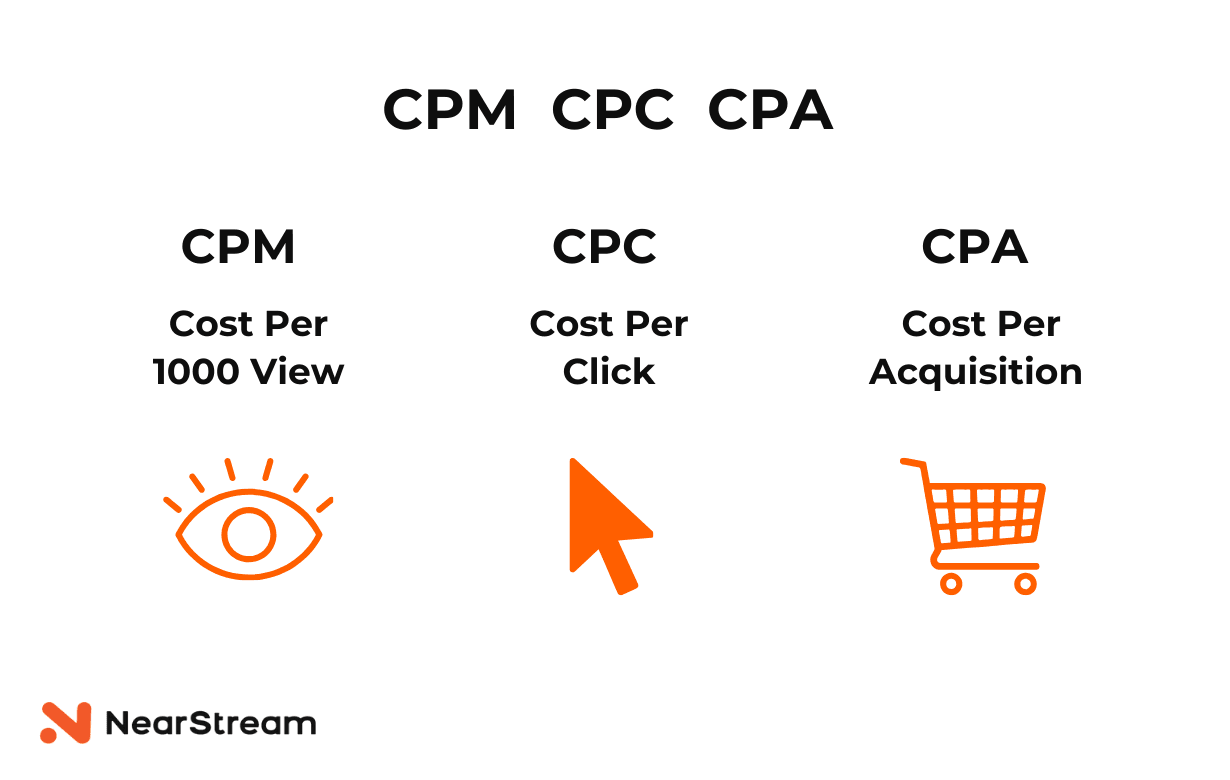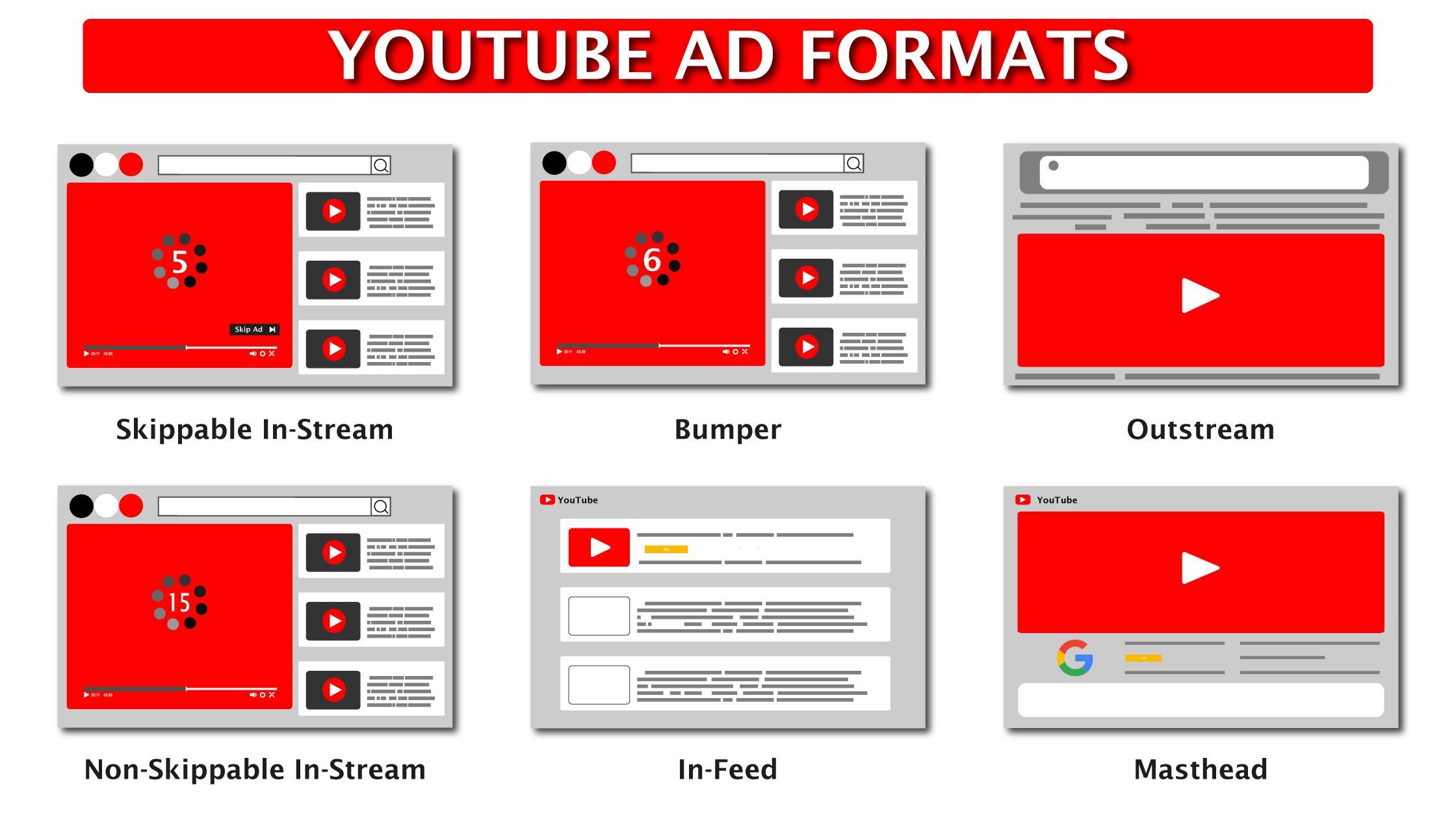In today's digital marketing landscape, YouTube has become a crucial platform for brands and creators to run advertising campaigns. Whether through video ads or other advertising products, advertisers have access to billions of potential viewers worldwide. However, the cost structure for YouTube ads is quite complex, influenced by multiple factors such as the ad type, target audience, timing, and geographical location. Understanding how YouTube ad pricing works and learning how to optimize your strategy based on your budget and goals is essential for any advertiser before launching a campaign.
Next, we'll dive into the key factors that influence YouTube ad costs and provide practical tips to help you develop a more cost-effective advertising strategy.
YouTube Ad Pricing Explained: How Much Does It Really Cost?
When people ask “How much does a YouTube ad cost?”, they often expect a flat rate — but YouTube advertising doesn’t work like buying a billboard. It operates as a dynamic bidding system, similar to Google Ads, where the actual cost depends on competition, audience targeting, ad format, and your campaign goals.
Cost Model | What It Means | Average Cost | Best For |
|---|---|---|---|
CPM | Cost per 1,000 ad impressions | $4 – $25 | Brand awareness campaigns |
CPC | Cost per click on an ad | $0.10 – $2 | Direct-response campaigns, lead generation |
CPA | Cost per action (signup/purchase) | $2 – $10+ | Direct-response marketing |

So...How Much Will You Pay?
There is no one-size-fits-all answer. Your actual ad spend depends on:
Who you're targeting: Ads aimed at high-income, tech-savvy, or US-based audiences will cost more than broad, global ones.
When you're running the campaign: Q4 (especially around holidays) is the most expensive time due to ad demand.
What your goals are: If you’re going for views, CPV may be cost-effective; if you’re looking for conversions, CPA campaigns can get pricey — but results-driven.
Factors That Affect YouTube Ad Costs
Why do two advertisers running similar campaigns pay very different prices? Because YouTube ad pricing is based on an auction model, where the cost per impression or view is determined in real-time. Your final cost depends on a combination of who you target, how competitive your niche is, and how your ad performs.
1. Audience Targeting
The more specific and desirable your audience is, the higher the ad cost.
By Geography: Ads targeting the U.S., Canada, UK, or other high-income regions will cost more
By Age/Gender/Interests: Targeting 25–35-year-olds in tech or finance niches costs more than broad generic audiences
By Device Type: Ads shown on desktop devices can cost more than mobile, especially for B2B campaigns
2. Industry / Niche Competition
Some topics are simply more expensive to advertise in.
Industry / Field | Estimated CPM Level | Description |
|---|---|---|
Finance / Investment | $15 – $40 | High profit, intense competition among advertisers |
SaaS / Software Tools | $10 – $25 | B2B marketing, high targeting accuracy |
Education / Online Courses | $8 – $20 | High conversion value, clear audience |
Lifestyle / Entertainment | $3 – $10 | Moderate competition, average CPM |
Gaming | $2 – $8 | Large audience but relatively high competition, lower CPM |
3. Ad Format
As we’ll discuss more in the next section, not all ad formats are priced the same. Skippable in-stream ads (the common “Skip in 5 seconds” ones) are cheaper than non-skippable bumper ads. Discovery ads (that appear in search) may cost more per click but get higher intent.
4. Campaign Objective & Bidding Strategy
Awareness Campaigns (CPM/CPV) = broader, cheaper per view
Conversion Campaigns (CPA) = focused, but costlier
Maximize Views vs. Target ROAS = strategy affects pricing
**Manual bidding vs. smart bidding can also impact cost structure
5. Ad Quality Score
YouTube ranks your ad’s relevance, watch rate, CTR, and user feedback, just like Google Ads.
If your ad is poorly edited, irrelevant to the audience, or skipped quickly — you’ll pay more per view. A well-optimized, engaging ad can cost less and perform better.
High-quality advertisements will instead receive "price discounts" from the platform.
YouTube Ad Formats and Their Pricing Differences
YouTube offers various ad formats, each with its own pricing model. Understanding the differences between these ad formats can help advertisers choose the best option for their goals and budget. Below are the most common YouTube ad formats and how they affect pricing.
1. TrueView Ads
TrueView ads are the most popular ad format on YouTube. They allow users to skip the ad after 5 seconds, which means advertisers only pay when viewers watch the ad for at least 30 seconds (or the full length, if it’s shorter than 30 seconds) or engage with the ad in some way, such as clicking on a call-to-action (CTA).
Cost: TrueView ads are typically priced on a CPV (Cost Per View) basis. The cost per view can range from $0.10 to $0.30 depending on factors like the targeting options and audience engagement.
2. Bumper Ads
Bumper ads are short, six-second video ads that cannot be skipped. They are designed to deliver a quick, impactful message. Because of their brevity, bumper ads are often used for brand awareness and promotional campaigns.
Cost: Bumper ads are generally priced on a CPM (Cost Per Thousand Impressions) basis. The cost can range from $5 to $10 per thousand views depending on targeting and competition.
3. Non-Skippable Ads
Non-skippable ads are video ads that must be watched in their entirety before the viewer can proceed with their video. These ads are typically 15-20 seconds long and are highly effective at getting the viewer’s full attention.
Cost: Like bumper ads, non-skippable ads are priced on a CPM basis. However, due to their longer format and the fact that viewers cannot skip them, non-skippable ads tend to be more expensive. The cost can range from $7 to $15 per thousand views.
4. Display and Overlay Ads
Display ads are shown next to the video or on the YouTube homepage. Overlay ads are semi-transparent banners that appear at the bottom of the video. These ad formats are less intrusive, and they provide viewers with the option to close or skip the ad.
Cost: Both display and overlay ads are priced on a CPM or CPC (Cost Per Click) basis. The cost can vary significantly depending on factors such as targeting, ad placement, and competition. Expect to pay between $1 to $5 per thousand impressions or a similar range for CPC.
5. Sponsored Cards
Sponsored cards appear as small, clickable cards within a video that direct viewers to additional content. These ads are subtle and designed to engage viewers without disrupting their video experience.
Cost: Sponsored cards are priced based on a CPC model. The cost depends on the specific ad campaign and its targeting.

How Much Does a YouTube Ad Campaign Cost in 2025?
In 2025, the cost of running a YouTube ad campaign can vary significantly based on multiple factors such as your goals, targeting options, and the type of ad you choose. However, we can provide a general overview of what to expect in terms of costs for different types of YouTube campaigns.
1. Brand Awareness Campaigns
For campaigns focused on brand awareness, the goal is typically to reach as many people as possible. This kind of campaign often uses the CPM pricing model. In 2025, the cost for a CPM campaign could range from $5 to $15 per 1,000 impressions, depending on factors like audience targeting, industry, and competition.
2. Engagement and View-Driven Campaigns
If your goal is to drive views, engagement, or interaction with your video, then the CPV model is usually more effective. For a CPV campaign, you could expect costs ranging from $0.10 to $0.50 per view in 2025, depending on the video’s appeal and the targeting options you choose.
3. Conversion and sales-driven advertising campaigns
For campaigns aiming to drive conversions (such as purchases, sign-ups, or downloads), the CPA pricing model is most appropriate. In 2025, you can expect a CPA campaign to cost anywhere from $5 to $50 per acquisition, depending on the complexity of the conversion goal and the industry you are in.
4. Additional Costs
In addition to the basic ad costs, there may be additional fees for production (creating high-quality video ads), management (hiring an agency or consultant to optimize your campaign), and targeting (narrowing down your audience to specific locations, interests, or demographics). These additional costs can range widely, with production costs averaging anywhere from $1,000 to $10,000 or more, depending on the ad's complexity.
Is YouTube Advertising Worth the Price?
Factor | YouTube Advertising | Traditional Advertising (TV, Print) |
|---|---|---|
Audience Reach | Over 2 billion logged-in users worldwide. | Limited to specific channels, publications. |
Targeting | Highly targeted based on interests, behavior, location. | Limited targeting, often by broad demographics. |
Cost | Flexible pricing models (CPM, CPV, CPA). | Generally more expensive. |
Analytics | Real-time data on views, engagement, ROI. | Limited measurement, often only reach and frequency. |
Scalability | Scalable from small to large budgets. | Expensive for small businesses, hard to scale. |
Ad Type Flexibility | Variety of formats (video, overlay, etc.). | Primarily limited to TV or print ads. |
✅ Key Advantages of YouTube Ads
Global Reach with Precise Targeting
YouTube offers an unmatched global audience of over 2 billion active users, while allowing precise targeting based on interests, location, and behaviors. You can reach a highly relevant audience without wasting ad spend on uninterested viewers.
Flexible Budgeting Options
Unlike traditional advertising, YouTube ads allow flexibility. You can start with a small budget and scale up, and you’re only paying for the engagement you get (CPV, CPM, CPA). This makes it accessible to businesses of all sizes.
Real-Time Performance Tracking
YouTube provides real-time data on your ads' performance. You can monitor impressions, views, clicks, and conversions, which allows you to optimize your campaigns on the fly for better results.
YouTube Ads vs. Other Platforms: Cost Comparison
Metric | YouTube Ads | Facebook Ads | Instagram Ads | TikTok Ads | Google Ads |
|---|---|---|---|---|---|
Cost Per Thousand Impressions (CPM) | $2 - $10 | $5 - $10 | $5 - $12 | $1 - $4 | $1 - $5 |
Cost Per Click (CPC) | $0.10 - $0.30 | $0.25 - $0.60 | $0.20 - $1.00 | $0.20 - $1.00 | $0.20 - $2.00 |
Cost Per View (CPV) | $0.01 - $0.03 | N/A | N/A | N/A | N/A |
Ad Format Flexibility | Video, display, overlay, skippable, non-skippable | Image, video, carousel, slideshows | Image, video, stories, carousel, reels | In-feed video, Branded Hashtag Challenge, TopView ads | Search, display, shopping ads |
🌟 Key Takeaways
YouTube Ads generally cost more than some other platforms, especially when it comes to video views. However, its video format provides greater engagement, making it worth the investment for campaigns focused on visuals.
TikTok tends to offer cheaper CPMs and CPCs, but its user base is more youthful and may require more creative ad approaches.
Facebook and Instagram offer similar ad pricing and targeting, but their ad formats lean more towards image-based advertising, while YouTube offers more dynamic video options.
Google Ads might be more cost-effective in terms of intent-driven searches, but YouTube’s video ads tend to generate higher engagement, making it a better choice for brand awareness campaigns.

Tips to Lower Your YouTube Ad Spend Without Losing Impact
Use Targeted Audiences to Maximize ROI
One of the most effective ways to reduce ad spend is to narrow your audience targeting. Instead of casting a wide net, focus on your ideal customers based on demographics, interests, behaviors, and location. This ensures your ads reach people most likely to convert, rather than wasting money on viewers who are less likely to engage.
Optimize Video Length and Ad Type
The length of your video ad plays a crucial role in cost efficiency. Shorter ads, such as 6-second bumper ads, tend to be cheaper and have higher completion rates compared to longer ads. Additionally, consider using skippable ads instead of non-skippable ones. Skippable ads allow viewers to skip after 5 seconds, which can reduce your cost per view (CPV), while still giving your ad exposure to those who are interested.
Leverage YouTube's Smart Bidding Options
YouTube offers several smart bidding options that can help you optimize your ad spend. Using strategies like Target CPA (Cost Per Acquisition) or Target ROAS (Return on Ad Spend) allows Google’s algorithms to automatically adjust bids to get the best value for your ad dollars. This takes the guesswork out of bidding and helps you optimize for the most cost-effective results.。
Use Remarketing to Re-engage Interested Viewers
Remarketing is a powerful way to engage people who have already interacted with your brand or website. By targeting those viewers who have watched a portion of your video or visited your site, you can re-engage them with tailored content, making them more likely to convert. Remarketing campaigns often have lower costs since you're targeting an audience that has already shown interest in your brand.
Monitor and Adjust Your Campaign Regularly
Continuous monitoring of your campaigns is essential to ensure you are not overspending on underperforming ads. Analyze key metrics like CPM, CPC, and CPV to identify areas where you can optimize. If certain ads or targeting strategies aren’t delivering the expected results, don’t hesitate to adjust your budget or shift focus to more successful strategies.
💡 Ready to Take Your YouTube Ads to the Next Level?
Optimize your streaming setup and ensure top-quality content with NearStream’s professional products, like the All-In-One Podcasting Kit for podcast. Whether you're producing YouTube ads or live streams, NearStream has the tools to elevate your production. Don’t wait—explore today and bring your content to new heights!










































































